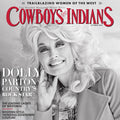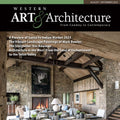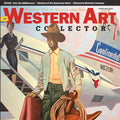Greg Campbell on Wood Turning
By Medicine Man Gallery on
Wood Turning: How it's Done


I turn all of my pieces on a wood lathe using a variety of cutting tools. Depending on when the tree was cut, the wood is either wet or dry. The wetness of the wood determines the method I use when turning the piece.

If the wood is bone dry, I can turn the piece all at once. With a wet log, I turn a rough shape of the outside and then hollow out the inside. At this point in the turning process, the wall thickness of the piece ranges from half an inch to one inch. The outside of the bowl is sealed with a green wood sealer and it is left out to dry for four to eight weeks.


After the bowl has dried, warped and cracked, I will re-tool the bowl and then hollow the inside walls to between one eighth to one fourth inch thickness or whatever seems safe depending on the type of wood.
If a bowl cracks, I first fill the cracks with sawdust and superglue. Next the cracks are filled with stone, sometimes nugget by nugget, and then they are sanded until they are flush with the wood.
Hopefully, I can start sanding with 120 grit sandpaper and finish with 1500 grit. After sanding, the bowl is coated with an oil sealer and then I start the final finish with tongue oil, hand rubbing between each coat to ensure a smooth finish. I like people to be able to handle my bowls and feel the fine finish. Most bowls receive about 12 to 14 coats to get the high gloss that I want. More time is spent in finishing the bowl than cutting and hollowing the piece. Finally, all bowls are numbered and photographed before they are sold.

My work was shown in the February 1991 issue of Better Homes and Gardens Wood Magazine" with an exhibit sponsored by Arizona Woodturners Association. I have also had pieces displayed at Arizona State University Nelson Fine Art Museum and at the Fitchburg Art Museum in Massachusetts. My turnings have been sold in Arizona, California, New Mexico, Washington, West Virginia and Rhode Island.

Artist Greg Campbell was selected for the honor of creating the wooden base for the 2002 Phoenix open trophy. The Waterford crystal thunderbird design sits atop a base that Campbell made from mesquite wood, adorned with turquoise.



